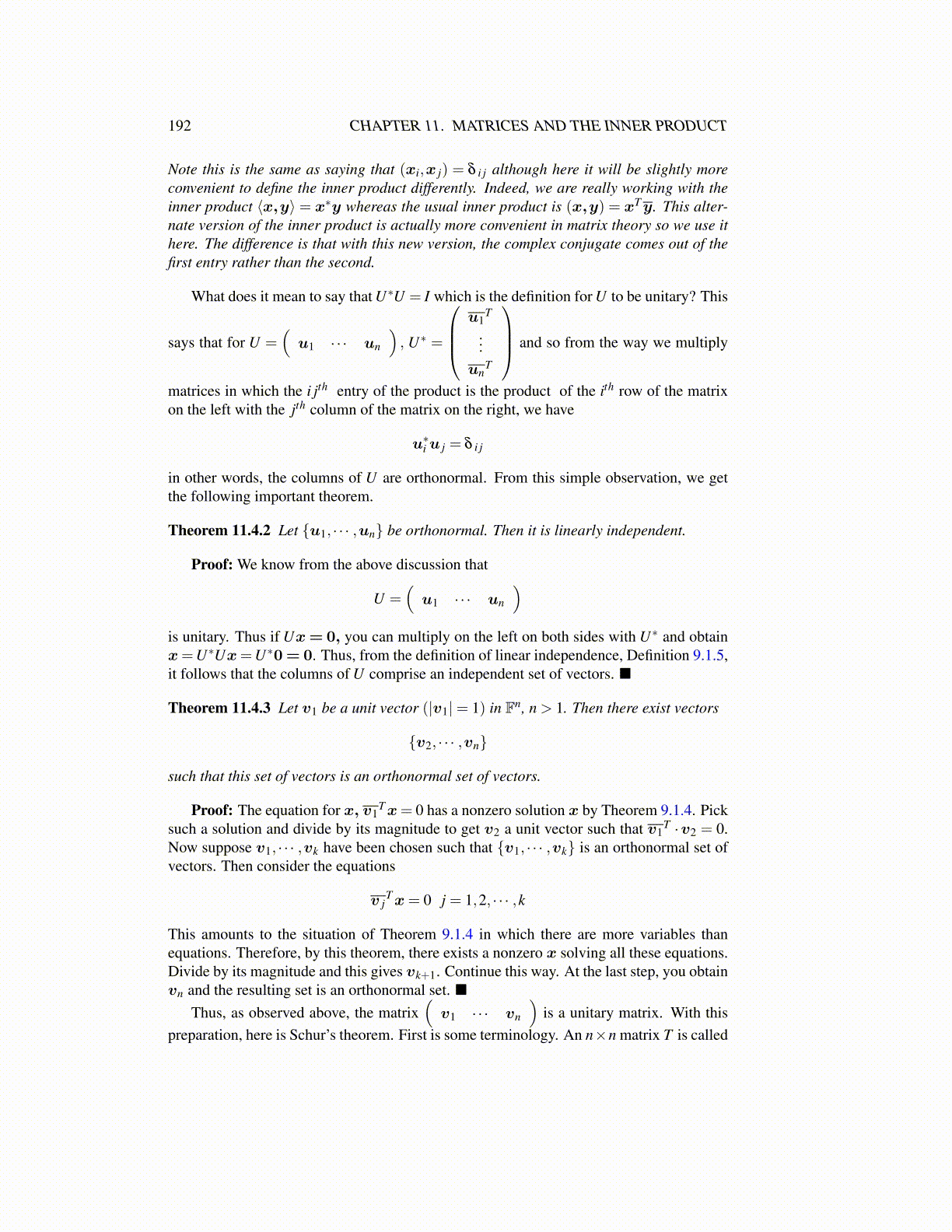
192 CHAPTER 11. MATRICES AND THE INNER PRODUCT
Note this is the same as saying that (xi,x j) = δ i j although here it will be slightly moreconvenient to define the inner product differently. Indeed, we are really working with theinner product ⟨x,y⟩ = x∗y whereas the usual inner product is (x,y) = xTy. This alter-nate version of the inner product is actually more convenient in matrix theory so we use ithere. The difference is that with this new version, the complex conjugate comes out of thefirst entry rather than the second.
What does it mean to say that U∗U = I which is the definition for U to be unitary? This
says that for U =(
u1 · · · un
), U∗ =
u1
T
...un
T
and so from the way we multiply
matrices in which the i jth entry of the product is the product of the ith row of the matrixon the left with the jth column of the matrix on the right, we have
u∗i u j = δ i j
in other words, the columns of U are orthonormal. From this simple observation, we getthe following important theorem.
Theorem 11.4.2 Let {u1, · · · ,un} be orthonormal. Then it is linearly independent.
Proof: We know from the above discussion that
U =(
u1 · · · un
)is unitary. Thus if Ux= 0, you can multiply on the left on both sides with U∗ and obtainx=U∗Ux=U∗0 = 0. Thus, from the definition of linear independence, Definition 9.1.5,it follows that the columns of U comprise an independent set of vectors. ■
Theorem 11.4.3 Let v1 be a unit vector (|v1|= 1) in Fn, n > 1. Then there exist vectors
{v2, · · · ,vn}
such that this set of vectors is an orthonormal set of vectors.
Proof: The equation for x, v1Tx= 0 has a nonzero solution x by Theorem 9.1.4. Pick
such a solution and divide by its magnitude to get v2 a unit vector such that v1T ·v2 = 0.
Now suppose v1, · · · ,vk have been chosen such that {v1, · · · ,vk} is an orthonormal set ofvectors. Then consider the equations
v jTx= 0 j = 1,2, · · · ,k
This amounts to the situation of Theorem 9.1.4 in which there are more variables thanequations. Therefore, by this theorem, there exists a nonzero x solving all these equations.Divide by its magnitude and this gives vk+1. Continue this way. At the last step, you obtainvn and the resulting set is an orthonormal set. ■
Thus, as observed above, the matrix(
v1 · · · vn
)is a unitary matrix. With this
preparation, here is Schur’s theorem. First is some terminology. An n×n matrix T is called